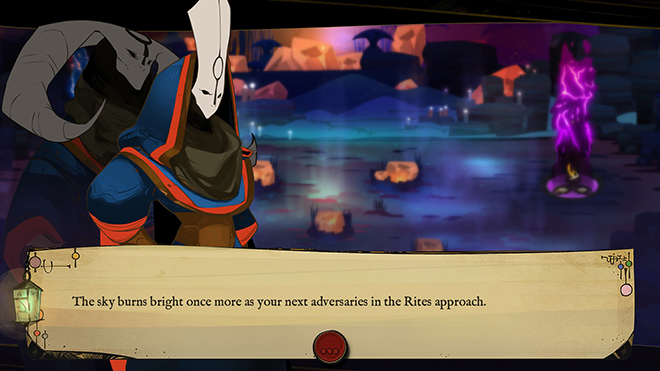Quarantine Control #17: Last of the Psycho Sessions

Previous Quarantine Control entries have discussed how the coronavirus is slowly ravaging the United States while the country’s leadership has thrown up their arms and surrendered to it. Other countries took decisive action to prevent the virus from spreading again in their countries within a short timeframe, the reasons why Canada closed their border to Americans and the European Union banned Americans from travelling into the country. But the coronavirus has a funny way of reminding communities that it’s still around regardless of the country, especially if their leaders reopen the economies and people get reckless.
This is why Quarantine Control is sticking around, and why you should stick around to read this entry and others, preferably in the home.
Geoffrey Barnes
I’m just writing about a little game I replayed in the last week.
The Last of Us Remastered (2014)
Source: PlayStation 4
It’s a video game
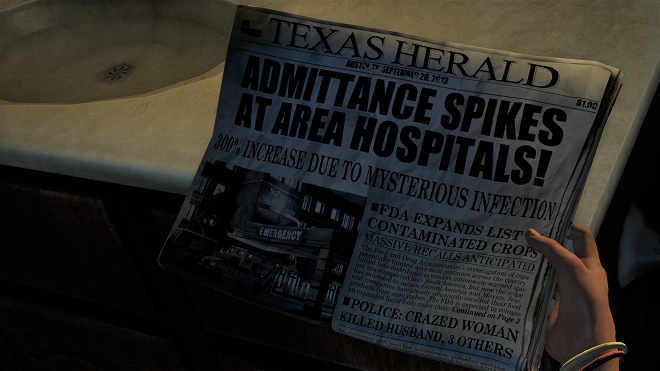
I’m still a little burnt out on playing open world games after spending hours going through Assassin’s Creed Odyssey, a subsequent side effect I didn’t expect but probably should have. It’s why I jumped to the Strider reboot afterward, a title I didn’t realize I owned until I looked over my PlayStation 4 digital purchase library. Strider wasn’t the most memorable or best-designed Metroidvania game around, but I enjoyed its shortness and had enough fun playing through it, which is sometimes all you need. I’m still not in the mood for anything too long, why I felt it was a good time to replay The Last of Us for the first time since it released on PS3 in mid-2013, seven years ago. This was my first time, however, playing through the Remastered version on PS4.
TLOU is especially fun to replay now not because the sequel released last month, a divisive title for good and bad reasons, but because it’s a game about a pandemic to play while the world is dealing with a real pandemic. TLOU’s is much larger in scale, fatal to the point of eventually wiping out a good portion of humanity, but there are nonetheless eerie parallels — particularly in how everything starts. Some characters don’t take it seriously at first (including, to some extent, the main character before serious tragedy occurs), and it’s too late by the time they do. Most of the others who do take it seriously are not shown after the 20-year time skip, though some were shown to be crazily prepared for the worst.
TLOU was a largely linear game that originally released during a time when “linear” became a bad word, near the end of the last console generation. So, it’s funny that it feels like a breath of fresh air now, in contrast to a market flooded with open world games. The game is only slightly less linear than one of developer Naughty Dog’s Uncharted games, but progression is done in a way where it doesn’t feel like it’s constantly pulling the player forward. There are points where other characters continue walking forward while Joel can search through areas for ammo and materials, but the rush isn’t as intense as the PS3 Uncharted titles. (The PS4 games toned this down a bit, especially Uncharted 4.) I noticed this time around that Ellie is a little pushier with Joel about moving forward, though isn’t later on as she gets to know Joel better.
One of my top reasons for replaying TLOU was to see whether I thought the story, writing, and characters held up compared to my 2013 thoughts. I’ve watched more movies and TV shows and read more books in the time since, which was enough to determine that in no way is this game’s writing and character development on par with the best examples in other mediums. To its credit, the writing and acting are good by video game standards, and show what a developer is capable of when storytelling is given a larger priority in a non-adventure or visual novel title. Games have been more open in this console generation, which has stretched writers thin with the need to provide work for main stories and side quests in open worlds.
The game is still quite linear, and there were points where I wished I could explore more of its dilapidated environments, and that the game itself leaned in further into the survival aspects. But it’s still a good game that does its job in keeping the player’s attention throughout most of the way. I still appreciate how it largely offers the player the freedom to approach combat situations in a stealthy manner or the option to go in guns blazing. This isn’t the case for every encounter, but this was when Naughty Dog realized that not everything needed to be a set piece where players needed to follow a predetermined sequence.
It’s possible that I’ve got a lot of practice in how to be stealthy in other games, because I had an easier time going through certain parts of the game this time around. I can’t remember, for instance, how many times I died in the game’s final section when I originally played TLOU in 2013, the ultimate test of whether the player has adjusted to how all the mechanics work. But I didn’t die once this time around, all thanks to choosing to venture through it in a more careful manner, though there were points where I was spotted and shot it out, though I didn’t fire blindly.
Video games have only become more open since this game originally released at the end of the PS3’s life, just before the PS4 arrived. But TLOU still holds up thanks to mixing linearity with a bit of openness. I’m well aware of the can of worms that involves merely discussing The Last of Us Part II, but I haven’t played it yet and likely won’t for several months. I’ll tackle it after the flames have died down.
Joseph Daniels
The Bright Sessions (2015)
Source: Spotify (and/or your favourite podcast service)
Episodes: 63 (plus bonus episodes)
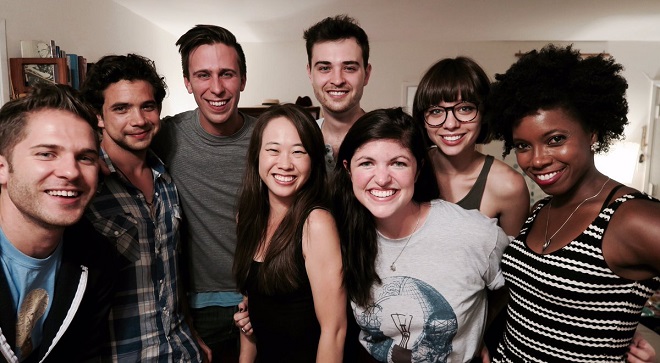
As usual, my count is different from the “official” count, but considering all the episodes are numbered and there’s one that’s only about three minutes long, and a couple others that are twelve minutes or less, there does seem to be some internal criteria to which episodes are “official” and which are bonus. There are also a couple actually bonus episodes released during season two, as well as extra material released after the series finale.
Anyway, how can I talk about The Bright Sessions without spoiling? There are aspects of it that I’d like to comment on which are fresh and wonderful and done exceedingly well, but even discussing them would spoil the surprise for anyone who would want to experience it for themselves. I want to talk about the gay romance subplot which is done pretty well, but spoilers. I mean, it’s written like just a regular romance subplot and the fact that they’re both guys doesn’t even factor into it. There’s also a character who has self-proclaimed himself a villain, and his voice actor is spot on, but he’s got a lot more going on than just “Mwahaha, I’m so evil!” His motivations are his own and although they’re selfish, even he’s treated sympathetically. If you think back to when you played as Fou-Lu in Breath of Fire IV, it’s exactly like that. You’re given reason to sympathize with him and you stop thinking of himself as a potential antagonist.
The Bright Sessions began in season one by telling its story in the form of therapy sessions for people who are “atypical” and it can be tempting to use that kind of storytelling platform to write a few episodes that aren’t part of the mythology arc, as such a thing has come to be known thanks to the X-Files fandom. Or to borrow from anime, add in a few stand alone episodes to balance out the complex ones. In this podcast, every episode is important and after the initial nine episode run of the first season, the characters began to interact in season two and the action is soon taken outside of Dr. Bright’s office. Storylines begin to intersect, we find out more about the motivations of Dr. Bright as well as secrets about her past, and even the one patient whose story seemingly doesn’t have anything to do with anyone else’s, Caleb, finds himself getting a bit too deep into a situation that feels dangerous to him.
The series is better written than most, better acted than most, and I dare say, might even be better than Welcome to Night Vale. After the events of the season two finale, I’d been thinking that the fate of specific characters would remain a mystery and we would be strung along in season three, but we very quickly find out more about what those characters are up to in the third episode of the third season. I suppose that’s a thing the series is good at, exceeding expectations.
Between his time as Jack Bauer in 24 and President Tom Kirkman in Designated Survivor, Kiefer Sutherland played the role of Martin Bohm in a series called Touch, Tim Kring’s first project since the initial end of Heroes. He was father to an autistic boy named Jake who can see the patterns in the world around him. Jake also doesn’t like being physically touched. Unfortunately, communication is a major issue and Jake can’t explain clearly what’s going to happen, just offer the barest of hints, sometimes a single number, as a clue. The first season tied together exceptionally well, but the second season strayed from that initial concept and introduced aspects to the show that just weren’t present in the first season and weren’t what anyone had originally watched it for. Touch didn’t last, and was cancelled after a very successful first season and a very disappointing second.
The difference between the sudden shift in Touch and the shift in The Bright Sessions is that unlike the former, the latter began seeding the overall storyline from the very first episode. Then in the second season, the main conflict of the first half of the series unfolded quite nicely, and the third and fourth seasons developed in new and interesting ways past that. The series was never tempted to add more therapy characters into the mix for the sake of it and by the time the series had ended, only one new patient had been added to the story. This is something which, speaking of Heroes, other stories about people with powers always got wrong. You don’t put a lot of superheroes into a room and hope that some of them are interesting and important to the overall story. You create a small handful of them that are important to the story you’re trying to tell and bring them together in believable ways.
To me, The Bright Sessions is superhero fiction done right. You can have as many shadowy organizations as you want, you can have people being experimented on, but don’t set your sights too high. Don’t tell a story too ambitious to hold together and don’t add so many characters that you can’t devote enough screen time to all of them and make them all equally interesting. If your solution is to kill off the unpopular ones and keep introducing more, then you’ve failed as a storyteller. The brilliance of the first season of The Bright Sessions is that it introduced the main cast and allowed listeners to get to know them, and even prepared us for the eventual introduction of Damien and the agents from the AM. Then the second season was able to take all of the groundwork from the first and throw us into the deep end. Whereas the second season of Touch felt like we were thrown into the deep end of a completely different pool, The Bright Sessions kept us in the same pool and didn’t introduce us to anything that came out of left field.
Angela Moseley
I’m impressed Quarantine control has been ongoing for 17 weeks now. I’ve finally managed to catch up on some anime, but the list of new series available continues to grow each day. I wonder if I’ll ever get my backlog under control.
Keep Your Hands off Eizouken (2020)
Source: Crunchyroll
Episodes: 12
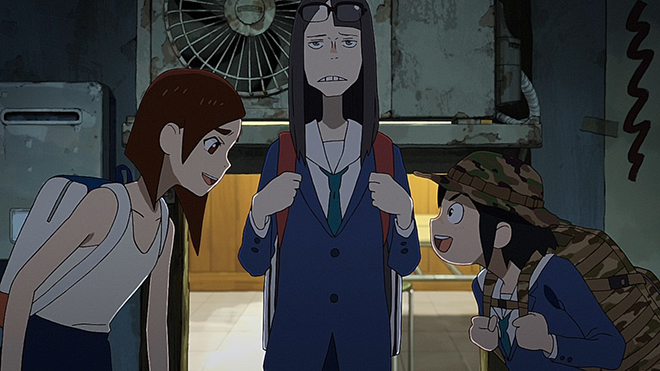
If I’m being honest with myself, I’ve fallen off of the current seasons of anime hard. I didn’t watch anything for the spring season, and so far I only have my eye on seasons two of Fire Force and Re:Zero for the summer. Fortunately, I’m not totally hopeless as I did finally finish Keep Your Hands off Eizouken which aired during the winter season. It was a show recommended by both ANNCast and the Anime Podcast of Some Sort. The hosts of these shows had wildly differing tastes so when they align something is usually worth checking out. It took me about two episodes to get into Keep Your Hands off Eizouken, but I immediately saw what made this show special.
Eizouken is about the expression of raw creativity and imagination. Midori Asakusa is a severely introverted animation geek who dreams of creating her own anime someday. Her only friend is the business-minded Sayaka Kanamori. One day the pair has a run in with their classmate, Tsubame Mizusaki who’s also a famous fashion model. After an incident where Asakusa and Kanamori help Mizusaki escape the anime club and school for the day, they all learn they share a goal in creating anime. Namely Asakusa and Mizusaki share a love of drawing and bringing those creations to life. Kanamori sees a business opportunity. The trio set out to create a film club in the school where they can create anime together. Asakusa creates the concepts and story, Mizusaki animates the characters, and Kanamori uses her business savvy to keep the girls on task.
I originally thought the goal of Eizouken would be just to have the film club create one anime short. I was pleasantly surprised that they actually create several short projects. At first I found myself slightly annoyed with Asakusa and Mizusaki’s crazy imagination sequences that saw weird imaginative flights of fancy. Seriously, the sequence where they escape from guards and take off in a plane that Asakusa designed was insane given the relative mundanity of their world. Then it hit me, the imaginative tangents and flights of fancy were the point. Their creativity flowed from imagination allowed to flourish. The world is their play thing and nothing can stop them. It reminded me of my childhood days where everything inch of the real world was ripe for exploration.
I also loved how both girls turned that creativity into animation and their projects came to life. Asakusa used her research and knowledge to bring a sense of realism. Nothing was created without purpose and whatever she created had to be believable on some level. For example, if she drew a small flying machine, how would it realistically fly and move in the real world? How many propellers would it need? How would the pilot enter and exit the craft? On the animation side, Mizusaki would apply her knowledge of motion and impact to give animated characters realistic movement. Her upbringing as a model also helped as she meticulously studied and imitated the movements of others.
Rounding out the trio is Kanamori. She made sure the film club actually finished projects on time and within budget. An unwavering business sense and pragmatism made her my favorite character. Creativity run wild eventually collides with the real world and can crush dreams. She made sure the film club stayed funded, found resources, and made the hard compromises between creative vision and reality. What’s the point of being the best animators in the world if you can’t finish a project? Additionally, she was fantastic at marketing the club and bringing in new business– something that creative types often struggle with when making a name and living for themselves.
Keep Your Hands off Eizouken strikes a fantastic balance between celebrating creativity and the limitations of business. The payoff of watching these girls work is getting to see their finished animated projects and all the hard work that went into them. I can’t recommend this show enough.
Psycho-Pass 3: First Inspector (2020)
Source: Amazon Prime
Episodes: 3
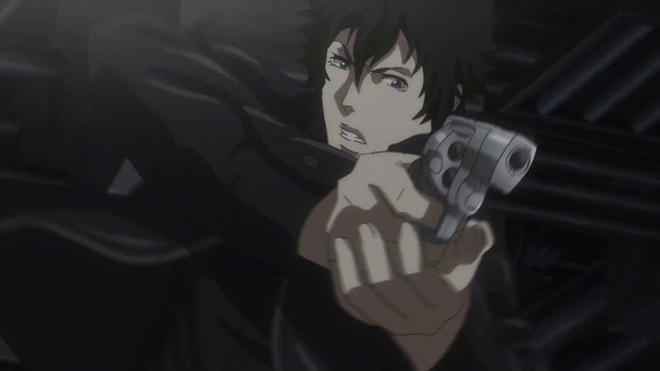
I originally wrote about Psycho-Pass season three for Quarantine Control #7. After I finished the third season, I was surprised to see a fourth season waiting for me on Amazon Prime. Curiously, I looked it up and it turns out that season four is actually the movie Psycho-Pass: First Inspector which is split into three 45-minute episodes. First of all, there is no enjoying First Inspector without having seen season three of Psycho-Pass. There is no enjoying season three without having seen the previous two seasons and the two accompanying movies. I missed those two movies and I’m a bit lost on some of the events, but thankfully my knowledge of the prior seasons is enough to follow the events of season four.
First Inspector takes place immediately after season three. The enigmatic Koichi Azusawa begins a coordinated assault on the Public Safety Bureau with the help of Congressman Haruki Shirogane. (A Congressman is a high-ranking member of the Bifrost system, which rivals Sybil in power and influence.) Other than the death of Governor Karina Komiya and to sow chaos, it isn’t clear what Azusawa wants. Inside the Public Safety Bureau Unit One’s inspectors and enforcers are able to fight back. On the outside Unit One inspector Kei Mikhail Ignatov joins forces with members of the Foreign Affairs Operations Department to help gain access to the PSB building.
All and all, First Inspector ends on a surprisingly upbeat note. We learn more about the Sybil System and how it plans to move society forward, Sybil’s rival system Bifrost, and the fate of inspectors from previous seasons. Additionally, Inspector Arata Shindo’s full backstory is revealed including why his parents disappeared from his life at such a young age. The twist of him being criminally asymptomatic was shown near the end of season three. It is interesting as it explains why he’s able to perform as a mentalist and gives him something in common with Shogo Makishima, the main antagonist of season one. Unlike the sociopathic Makishima, Shindo is fully empathic toward other people. This explains why former Unit One inspector Akane Tsunemori considers him to be her successor.
There were some fun moments in First Inspector. For example, getting to see secondary characters like Sho Hinakawa and Shion Karanomori really shine. Surprisingly, the comic relief of Chief Inspector Mika Shimotsuki didn’t feel out of place. I often welcomed it and chuckled as she pulled amusing one-liners such as “Don’t mess with Public Safety!” and her reaction after learning of her new boss at the end of the season. Even at this point, I’m not sure how she became chief, as she started season one as a high school student and season two as new inspector. Her promotion must have been in one of the movies I missed. Other fun moments included the reveal of a dominator shotgun and Azusawa getting his comeuppance.
The end of Psycho-Pass first Inspector can serve as a nice conclusion to the series or could theoretically launch a fifth season. It is unclear where Production I.G and director Naoyoshi Shiotani want to go. If the series ends here, I’m fine with that as I still have two movies I need to watch. I’m also good with a fifth season or another movie that touches upon the ending events of season four. Despite my personal enjoyment, this show is difficult to recommend to just anyone. If you’re convinced that season one of Psycho-Pass and the first movie as written by Gen Urobuchi are as good as it gets, you probably checked out a long time ago. If you’re a fan of the series beyond season two, check out season three and this movie. Definitely check out First Inspector if you liked season three. Newcomers definitely need to start with season one.
Monster Hunter World: Iceborne
Source: PlayStation 4
Episodes: 1 video game
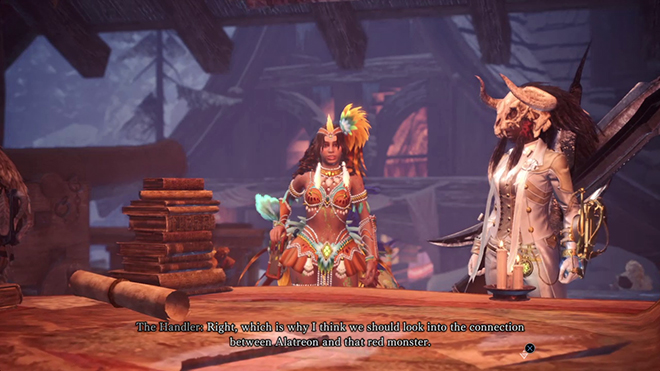
Since my last Quarantine Control contribution, I had a chance to return to Monster Hunter World: Iceborne. I grinded for gear to prepare me for the Alatreon fight. Then I took the monster on with friends and in our first attempt we made good progress. That left me with a false sense of security, as I went into a Sunday livestream of the event looking for a rematch. Unfortunately, I and the rest of my team were not ready for Alatreon. We fought three to four rounds and lost every match. Unlike our first attempt, we couldn’t even pass the elemental DPS check.
I spent some time reworking my build, even learning a new weapon in the process. I opted for the quicker dual blades over my usual slower switch axe. It wasn’t until early this morning that I finally felled Alatreon with my fiancé and random hunters. Ironically, I ended up returning to my switch axe. Some of things I learned was this fight does not allow for too many mistakes. Even if you do enough elemental damage to pass the DPS check and survive his supernova (aka Escaton Judgement), this black dragon can whip you mercilessly with regular attacks. Also, if you knock him over, but don’t break his horns he can switch elements making whatever element you brought to the fight useless.
What ended up working for us is having a team where folks stopped attacking in order to make sure everyone stayed healed. It also helped to find a nearly full session solely dedicated to fighting Alatreon. Most of the people in these sessions are willing to fight him over and over again. Unfortunately, I did not record video of my victory. As soon as I have a successful rematch I hope to get something on our YouTube channel soon enough. Now that he’s been beaten at least once, I can look forward to (or dread) the next powerful monster to come along as Capcom readies its final updates for Iceborne.
Just today, the United States got a reminder that the coronavirus should not be underestimated. Listen to what the experts say, even if their explanations sometimes change as they further understand how this virus works. It should also go without saying that masks do not give you coronavirus. If you go out, you should wear one. But this continuing series is enough proof that there’s plenty of entertainment to consume while inside — and these entries themselves can qualify as entertainment.





